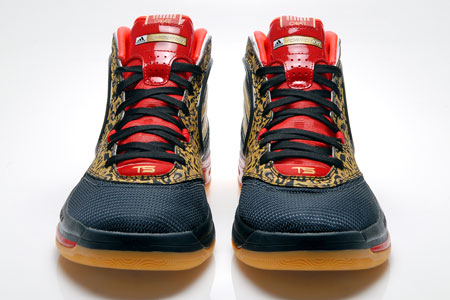In France, everyone's impression is elegant and romantic women, but they are the most real aspect we have not really learned. Born in 1977, French photographer Baudouin, in-depth many women take home life in France, used the camera to record the true French "house woman"the most real private life, which created the photographic series "I am a parisian lady "see what all.
Thursday, April 21, 2011
indonesia food
Introduction
Geographic and cultural diversity, together with a long history of visiting foreign merchants and colonists, have produced Indonesia's unique cuisine, which is still largely unknown to the outside world with the possible exception of the Netherlands.
The Chinese introduced nasi goreng (fried rice with vegetables), mie (noodles) stir-frying and the wajang (wok), the Indians their curries and spices (notably cardamom, coriander, cumin, ginger, onions and garlic), the Spanish chilli, peanuts and tomatoes while the Dutch have left their mark with sweets and cakes, and of course rijstaffel ( a selection of up to 40 dishes of meat, vegetables and rice served in individual bowls).
Indonesian cuisine continues to adopt ingredients and technologies – thanks to the Indonesian people's open-mindedness towards the new and their ability to give the new dishes a 'local twist'. For example, at a McDonalds in Indonesia, a Big Mac comes with chilli and you can even order McSatay!
How Indonesians eat
Indonesians eat relatively simple but delicious meals. Indonesian food is essentially 'peasant' cuisine – fresh, simple ingredients, combined with a subtle blend of spices, resulting in a delicious, inexpensive meal. Eating only becomes a grand affair in Indonesia when communal feats are held to celebrate family occasions, such as weddings, funerals and circumcisions, or harvest and religious feasts, such as the end of Ramadan.
An Indonesian meal usually consists of a main rice (nasi) dish with a combination of meat, fish, chicken, vegetable and egg side dishes. The range of flavourings used in Indonesian cooking is vast. Aromatic coriander and cumin, together with chillies, lemon grass, coconut, kecap manis (sweet soy sauce) and palm sugar are all important flavourings while sambal – a hot chilli sauce – is served just about everywhere, in case the food isn't spicy enough!
Vegetables are well catered for and Indonesian cooking uses tahu (tofu, soybean cake) and tempe (fermented soybeans), which are both good sources of protein.
Traditionally, food is eaten using the fingers of the right hand (the left is considered unclean), hence the soft stickiness of their rice. However, in areas familiar with Westerners, cutlery will be provided – usually a spoon and a fork – but otherwise you'll just have to 'do as the natives do'.
Sate, nasi goreng and gado gado (vegetables with spicy peanut sauce) are some of Indonesia's most famous dishes.
Regional Food
Many dishes served in restaurants come from Java and Sumatra. The coastal areas traditionally use a wider range of spices and flavourings. Sumatran cooking blends fresh and dry spices to produce hot and spicy dishes served with plenty of rice to tone down the spices. Rendang (meat simmered in spices and coconut milk) is a traditional West Sumatran dish. The Javanese use a more subtle blend of fresh spices, together with chilli mellowed by the addition of sugar. The Sundanese people of West Java make a beautiful crisp aromatic salad (karedok).
The third region usually visited by tourists is Bali and Lombock, where you'll find delicious sate (small pieces of meat roasted on a skewer) and poultry dishes. Babi guling (roasted suckling pig) is a traditional Balinese dish.
Where to eat
Indonesians eat best at home. So an invitation to eat with any friends you make in Indonesia should not be missed! Outside the home there are a range of eating places open all day.
Snacks – soup, sate (satay), noodles, etc. – can be obtained from a kaki lima (food cart). The smaller ones are mobile and the larger ones have tables and benches nearby.
Warungs (street stalls) are simple, open-air eating-places providing a small range of dishes based on rice and one meat or vegetable. A good place for warungs is at the pasar malam (night market). It's unlikely you'll find a menu in them – either ask for what you want or have a look and see what others are eating.
Rumah makan (eating house) refers to anything one step above a warung, although some owners prefer to use the more western-sounding restoran. Offerings may be as simple as a warung's, but usually include more choices of meat and vegetable dishes, and spicy accompaniments.
Simple Padang restaurants are common everywhere, although they are most authentic around Padang, the West Sumatran capital from which the cuisine originates. You don't order, but are presented with plain rice and a large selection of hot and spicy meat, fish and vegetable dishes. You pay for what you eat. But beware – a lot of padang food is extremely hot!
Large hotels in places such as Jakarta and Bali often have extensive buffets, incorporating richly spiced and sauced dishes. This is a modern version of Dutch rijstaffel, which once fed planters and businessmen.
Spices, sauces and flavourings
Asam (Tamarind)
In Indonesian, asam is the name given to tamarind as well as the taste: sour. This is the pulp surrounding the pod found on the tamarind tree. It is usually sold in dried form and is mixed with water when used in curries and fish dishes.
Cengkeh (Cloves)
These are the buds of the clove tree. Once only grown in the Maluku islands, cloves were the catalyst for an intense trade war between the Dutch, English and Portuguese. You won't taste cloves much in Indonesian cooking but you will smell them burning everywhere as they're the prime ingredient in kretek (clove cigarettes).
Daun Jeruk Perut (Kaffir Lime Leaves)
These aromatic, tart-tasting leaves are used much the same way as bay leaves are – namely, added into a stock or curry then taken out before serving.
Duan Salam (Salam Leaves)
These leaves are also called 'Indonesian laurel leaves' or 'Indonesian bay leaves'. But neither name does the leaf justice. It is an aromatic ingredient added to savoury dishes.
Gula (Sugar)
The main sweetener in Indonesian cooking is gula merah (palm sugar), which is made by extracting and boiling sap from the jaka (palm tree). Unlike granulated cane sugar, palm sugar is sold as a solid block. When it comes to using the sugar, it is chipped off or even grated into the mix. (It is also what makes teh manis (sweet tea) so sweet.)
Kemiri (Candlenut)
The fleshy interior of these nuts is used to add a nutty flavour and creamy texture to dishes.
Laos & Kencur (Galangal)
Laos has the same shape and function as ginger, but is bright orange and has a more bitter taste. Also popular is kencur which has more of a kick than laos.
Minyak (Oil)
The most widely used oil is minyak kelapa (cocounut oil) as it burns at a high temperature, making it perfect for deep frying. Other types of oil include minyak kacang (peanut oil) and minyak jagung (corn oil). But coconut oil, also called minyak sawit, is the number one oil used for all types of cooking.
Pala (Nutmeg)
It's ironic that the ingredient all of Europe scrambled for in the 16th-17th centuries isn’t used very extensively in the Indonesian kitchen. The fruit of the nutmeg is made into a preserve called manisan pala and both the seed and the nutmeg's shell are dried and sold whole or as powder.
Duan Pendan (Screwpine)
This plant, named for its twisted stems, is used in traditional cooking from India to Australia. Screwpine is used in sweet dishes for its delicate fragrance and green colouring.
Terasi, Belacan (Shrimp Paste)
You'll know when you come across shrimp paste because it has a very fishy, pungent aroma. This paste is made from small shrimp that are rinsed in sea water, dried, salted, dried again then pummelled to a paste. It is left to dry for about two weeks before being shaped into blocks. As you would expect, the paste adds a fishy, salty flavour to dishes.
Chilli
Known as cabe when fresh off the bush and sambal when mashed into a paste, chillies are what make Indonesians tick and they'll add them to almost anything. If you ever fall victim to a deceptively hot chilli, don't try to extinguish the fire with water as it will only make it worse. Instead, eat some plain rice.
Sambal (Chilli sauce)
The Mexicans have salsa, the Indians chutney, but in Indonesia, the essential condiment is sambal (chilli sauce). A table set without sambal isn't set properly. Sambals come in many varieties but the base for any sambal will be chillies, garlic, shallots and salt. Here are some of the most popular varieties:
Sambal Badjak: Chilli sauce made with shallots, sugar, tamarind, galangal and shrimp paste. Fried to a caramel consistency. (Mild by Indonesian standards.)
Sambal Jeruk: Chilli sauce made with lime juice, lime peel, salt and vinegar.
Sambal Terasi: Chilli sauce made with lime and roasted shrimp paste.
Ulek: Chilli sauce made with vinegar and lots of chillies. Very spicy!
Pecel: This sauce is similar to sambal but the spice is lessened with the addition of peanuts and tomato.
Saus Kacang (Peanut Sauce)
This is one of Indonesia's most famous culinary exports, the reason being that peanut sauce is so versatile. It can be used as a condiment, as a dip or as the flavour for a main meal. It is most famous for its appearance in gado gado.
Kecap (Soy Sauce)
Every restaurant in the country provides their diners with a bottle of soy sauce (made from soybeans fermented in brine). Most provide two – kecap asin (salty soy sauce), which is the same as soy sauce found throughout the world, and kecap manis (sweet soy sauce) which is thicker and sweeter.
A Recipe: Beef Rendang
Geographic and cultural diversity, together with a long history of visiting foreign merchants and colonists, have produced Indonesia's unique cuisine, which is still largely unknown to the outside world with the possible exception of the Netherlands.
The Chinese introduced nasi goreng (fried rice with vegetables), mie (noodles) stir-frying and the wajang (wok), the Indians their curries and spices (notably cardamom, coriander, cumin, ginger, onions and garlic), the Spanish chilli, peanuts and tomatoes while the Dutch have left their mark with sweets and cakes, and of course rijstaffel ( a selection of up to 40 dishes of meat, vegetables and rice served in individual bowls).
Indonesian cuisine continues to adopt ingredients and technologies – thanks to the Indonesian people's open-mindedness towards the new and their ability to give the new dishes a 'local twist'. For example, at a McDonalds in Indonesia, a Big Mac comes with chilli and you can even order McSatay!
How Indonesians eat
Indonesians eat relatively simple but delicious meals. Indonesian food is essentially 'peasant' cuisine – fresh, simple ingredients, combined with a subtle blend of spices, resulting in a delicious, inexpensive meal. Eating only becomes a grand affair in Indonesia when communal feats are held to celebrate family occasions, such as weddings, funerals and circumcisions, or harvest and religious feasts, such as the end of Ramadan.
An Indonesian meal usually consists of a main rice (nasi) dish with a combination of meat, fish, chicken, vegetable and egg side dishes. The range of flavourings used in Indonesian cooking is vast. Aromatic coriander and cumin, together with chillies, lemon grass, coconut, kecap manis (sweet soy sauce) and palm sugar are all important flavourings while sambal – a hot chilli sauce – is served just about everywhere, in case the food isn't spicy enough!
Vegetables are well catered for and Indonesian cooking uses tahu (tofu, soybean cake) and tempe (fermented soybeans), which are both good sources of protein.
Traditionally, food is eaten using the fingers of the right hand (the left is considered unclean), hence the soft stickiness of their rice. However, in areas familiar with Westerners, cutlery will be provided – usually a spoon and a fork – but otherwise you'll just have to 'do as the natives do'.
Sate, nasi goreng and gado gado (vegetables with spicy peanut sauce) are some of Indonesia's most famous dishes.
Regional Food
Many dishes served in restaurants come from Java and Sumatra. The coastal areas traditionally use a wider range of spices and flavourings. Sumatran cooking blends fresh and dry spices to produce hot and spicy dishes served with plenty of rice to tone down the spices. Rendang (meat simmered in spices and coconut milk) is a traditional West Sumatran dish. The Javanese use a more subtle blend of fresh spices, together with chilli mellowed by the addition of sugar. The Sundanese people of West Java make a beautiful crisp aromatic salad (karedok).
The third region usually visited by tourists is Bali and Lombock, where you'll find delicious sate (small pieces of meat roasted on a skewer) and poultry dishes. Babi guling (roasted suckling pig) is a traditional Balinese dish.
Where to eat
Indonesians eat best at home. So an invitation to eat with any friends you make in Indonesia should not be missed! Outside the home there are a range of eating places open all day.
Snacks – soup, sate (satay), noodles, etc. – can be obtained from a kaki lima (food cart). The smaller ones are mobile and the larger ones have tables and benches nearby.
Warungs (street stalls) are simple, open-air eating-places providing a small range of dishes based on rice and one meat or vegetable. A good place for warungs is at the pasar malam (night market). It's unlikely you'll find a menu in them – either ask for what you want or have a look and see what others are eating.
Rumah makan (eating house) refers to anything one step above a warung, although some owners prefer to use the more western-sounding restoran. Offerings may be as simple as a warung's, but usually include more choices of meat and vegetable dishes, and spicy accompaniments.
Simple Padang restaurants are common everywhere, although they are most authentic around Padang, the West Sumatran capital from which the cuisine originates. You don't order, but are presented with plain rice and a large selection of hot and spicy meat, fish and vegetable dishes. You pay for what you eat. But beware – a lot of padang food is extremely hot!
Large hotels in places such as Jakarta and Bali often have extensive buffets, incorporating richly spiced and sauced dishes. This is a modern version of Dutch rijstaffel, which once fed planters and businessmen.
Spices, sauces and flavourings
Asam (Tamarind)
In Indonesian, asam is the name given to tamarind as well as the taste: sour. This is the pulp surrounding the pod found on the tamarind tree. It is usually sold in dried form and is mixed with water when used in curries and fish dishes.
Cengkeh (Cloves)
These are the buds of the clove tree. Once only grown in the Maluku islands, cloves were the catalyst for an intense trade war between the Dutch, English and Portuguese. You won't taste cloves much in Indonesian cooking but you will smell them burning everywhere as they're the prime ingredient in kretek (clove cigarettes).
Daun Jeruk Perut (Kaffir Lime Leaves)
These aromatic, tart-tasting leaves are used much the same way as bay leaves are – namely, added into a stock or curry then taken out before serving.
Duan Salam (Salam Leaves)
These leaves are also called 'Indonesian laurel leaves' or 'Indonesian bay leaves'. But neither name does the leaf justice. It is an aromatic ingredient added to savoury dishes.
Gula (Sugar)
The main sweetener in Indonesian cooking is gula merah (palm sugar), which is made by extracting and boiling sap from the jaka (palm tree). Unlike granulated cane sugar, palm sugar is sold as a solid block. When it comes to using the sugar, it is chipped off or even grated into the mix. (It is also what makes teh manis (sweet tea) so sweet.)
Kemiri (Candlenut)
The fleshy interior of these nuts is used to add a nutty flavour and creamy texture to dishes.
Laos & Kencur (Galangal)
Laos has the same shape and function as ginger, but is bright orange and has a more bitter taste. Also popular is kencur which has more of a kick than laos.
Minyak (Oil)
The most widely used oil is minyak kelapa (cocounut oil) as it burns at a high temperature, making it perfect for deep frying. Other types of oil include minyak kacang (peanut oil) and minyak jagung (corn oil). But coconut oil, also called minyak sawit, is the number one oil used for all types of cooking.
Pala (Nutmeg)
It's ironic that the ingredient all of Europe scrambled for in the 16th-17th centuries isn’t used very extensively in the Indonesian kitchen. The fruit of the nutmeg is made into a preserve called manisan pala and both the seed and the nutmeg's shell are dried and sold whole or as powder.
Duan Pendan (Screwpine)
This plant, named for its twisted stems, is used in traditional cooking from India to Australia. Screwpine is used in sweet dishes for its delicate fragrance and green colouring.
Terasi, Belacan (Shrimp Paste)
You'll know when you come across shrimp paste because it has a very fishy, pungent aroma. This paste is made from small shrimp that are rinsed in sea water, dried, salted, dried again then pummelled to a paste. It is left to dry for about two weeks before being shaped into blocks. As you would expect, the paste adds a fishy, salty flavour to dishes.
Chilli
Known as cabe when fresh off the bush and sambal when mashed into a paste, chillies are what make Indonesians tick and they'll add them to almost anything. If you ever fall victim to a deceptively hot chilli, don't try to extinguish the fire with water as it will only make it worse. Instead, eat some plain rice.
Sambal (Chilli sauce)
The Mexicans have salsa, the Indians chutney, but in Indonesia, the essential condiment is sambal (chilli sauce). A table set without sambal isn't set properly. Sambals come in many varieties but the base for any sambal will be chillies, garlic, shallots and salt. Here are some of the most popular varieties:
Sambal Badjak: Chilli sauce made with shallots, sugar, tamarind, galangal and shrimp paste. Fried to a caramel consistency. (Mild by Indonesian standards.)
Sambal Jeruk: Chilli sauce made with lime juice, lime peel, salt and vinegar.
Sambal Terasi: Chilli sauce made with lime and roasted shrimp paste.
Ulek: Chilli sauce made with vinegar and lots of chillies. Very spicy!
Pecel: This sauce is similar to sambal but the spice is lessened with the addition of peanuts and tomato.
Saus Kacang (Peanut Sauce)
This is one of Indonesia's most famous culinary exports, the reason being that peanut sauce is so versatile. It can be used as a condiment, as a dip or as the flavour for a main meal. It is most famous for its appearance in gado gado.
Kecap (Soy Sauce)
Every restaurant in the country provides their diners with a bottle of soy sauce (made from soybeans fermented in brine). Most provide two – kecap asin (salty soy sauce), which is the same as soy sauce found throughout the world, and kecap manis (sweet soy sauce) which is thicker and sweeter.
A Recipe: Beef Rendang
| Ingredients 6 cups coconut milk 2 salam leaves 2 lime leaves 1 turmeric leaf 1 cinnamon stick (3 cm) 1 lemongrass tick (10 cm) 15 cloves shallots 15 cloves garlic 1 piece of ginger (3 cm) 1 piece of galangal (3 cm) 1 nutmeg seed 2 tbs chilli paste 500g prime rump beef cut into 4 sq cm pieces (leave fat on) Salt to taste | Method Heat the coconut milk in an uncovered wok over a very low flame. Add the salem leaves, lime leaves, turmeric leaf, cinnamon stick and lemongrass (don't cut these up). Crush the shallots, garlic, ginger, galangal and nutmeg to a paste. For this you can use a food processor or a traditional Indonesian mortar and pestle. Add this paste, the chilli paste and the salt to the coconut milk. Once the ingredients are heated through, add the beef and leave to cook very slowly for about four hours. Once the coconut milk has been reduced to an oily paste that sticks to the meat it is ready. Rendang is very rich, so it's best served with lots of rice and other dishes. |
| by:www.garudarestaurant.co.uk |
Labels:
indonesians
highst paying google ADSense keywords
A friend sent me a list of supposedly highest paying keywords for contextual advertising. I wonder is this true or whether this is just a gimmick to make other people believe so... and me supporting the hype by reproducing it here? For your amusement the partial list is at the end of this article. (and don't be surprised if google actually serves you those ads matching those keywords.)
Assuming that whoever produced this list is correct, by looking at the data one can tell that NY and Chicago lawyers are willing to pay a lot of money to get a potential customer via online ads.
But can someone explain why mesothelioma is in the top rank? Is it because people are afraid to get it? Or is it because many people have it already?
Luckily Google doesn't allow porn ads, otherwise we would have been drowning in nasty ads, which probably would have had the highest
click rate ever.
OK, I think I've figured it out: many of those sites seem to be a hoax. The source seem to be coming from: hxxp://www.cwire.org/highest-paying-search-terms/, but it will just trick you into clicking on some auto-generated content. Bad boy. No cookie.
Further search reveals more sites advertising similar hoaxes. Oh well, the nature of the internet -- you get both: the good and the less good.
One forum (http://forums.digitalpoint.com/showthread.php?t=2301) has suggested something that may give you an idea on the subject of keywords, but this thread is very dated. For example it suggests to go to http://www.google.com/adwords and try bidding at words and see which one come with a high price tag. Another user suggested to use Overture http://uv.bidtool.overture.com/d/USm/search/tools/bidtool/.
But even that thread concludes that those techniques don't really work and suggests:
Assuming that whoever produced this list is correct, by looking at the data one can tell that NY and Chicago lawyers are willing to pay a lot of money to get a potential customer via online ads.
But can someone explain why mesothelioma is in the top rank? Is it because people are afraid to get it? Or is it because many people have it already?
Luckily Google doesn't allow porn ads, otherwise we would have been drowning in nasty ads, which probably would have had the highest
click rate ever.
The list
Here is a partial list:$78.30 chicago personal injury lawyerI wonder whether I should research topics about lawyers and mesothelioma :)
$73.01 chicago personal injury attorney
$69.17 lasik new york city
$64.27 new york personal injury lawyer
$64.17 new jersey car insurance
$63.10 new york personal injury attorney
$61.64 chicago personal injury lawyers
$61.17 mesothelioma lawyers
$60.74 atlanta personal injury lawyer
$60.29 new york personal injury lawyers
$59.00 lasik dallas
$58.68 new york personal injury lawyers
$58.38 miami personal injury attorney
$58.25 what is mesothelioma
$58.08 best equity loan
$57.95 lasik new york
$56.88 whole life insurance quote
$56.75 new york car insurance
[...]
$53.46 whole life insurance quotes
$53.42 car insurance in new jersey
$53.12 las vegas personal injury lawyer
$53.12 term life insurance quotes
$52.57 mesothelioma treatments
$52.41 equity loan rate
$51.78 equity loan
$51.50 new york personal injury lawyer
$51.29 equity loan rates
$51.15 fixed rate equity loan
$50.54 causes of mesothelioma
[...]
$45.33 los angeles botox
$45.07 new lasik
$44.86 fixed equity loan
$44.51 san diego personal injury attorney
$44.19 125 equity loans
$43.58 mesothelioma cases
$43.57 car insurance in new york
$42.97 equity refinance
$42.70 asbestos and mesothelioma
$42.52 auto insurance quote
[...]
$40.47 [cosmetic surgery los angeles]
$40.04 personal injury attorney atlanta
$39.67 car insurance california
$39.66 oregon personal injury lawyer
$39.43 auto insurance
$39.35 albany personal injury lawyer
$39.21 fixed equity loans
$39.11 personal injury lawyers
$38.84 ameriquest mortgage
$38.31 auto insurance quotes
$38.19 mortgage refinance
$38.17 lump sum settlement
$37.43 cause of mesothelioma
[...]
Hoax Revealed
After receiving this list, I've googled for "Highest Paying Google AdSense Keywords" and apparently there is a lot of sites out there suggesting those words, most seem to concentrate on mesothelioma and lawyers but the prices seem to vary. I'm still puzzled how did they find out that information?OK, I think I've figured it out: many of those sites seem to be a hoax. The source seem to be coming from: hxxp://www.cwire.org/highest-paying-search-terms/, but it will just trick you into clicking on some auto-generated content. Bad boy. No cookie.
Further search reveals more sites advertising similar hoaxes. Oh well, the nature of the internet -- you get both: the good and the less good.
One forum (http://forums.digitalpoint.com/showthread.php?t=2301) has suggested something that may give you an idea on the subject of keywords, but this thread is very dated. For example it suggests to go to http://www.google.com/adwords and try bidding at words and see which one come with a high price tag. Another user suggested to use Overture http://uv.bidtool.overture.com/d/USm/search/tools/bidtool/.
But even that thread concludes that those techniques don't really work and suggests:
You shouldn't be building pages for
AdSense. You should be putting
AdSense ads on pages with lots of good content. Build the pages for
the reader, optimize them for the Search Engines, then you will get
visitors who are interested in the content and will be interested in
the AdSense ads. That is how you get a good CTR and that is how you
make money with AdSense.
Labels:
news
shoes
CLOT X NBA力作 比卢普斯战靴锦袍上身牛气十足
http://sports.sina.com.cn 2009年09月09日20:45 新浪体育

首屈一指的联名合作
仔细解构 CLOT x adidas NBA 个中故事
TS CUT CREATOR 本身是一对属于控球后卫的鞋,所以你可以见到很多不同的颜色在上。控球后卫是球场上拿球机会最多的人,他更要把球从后场安全地带到前场,再把球传给其他队 友,这才有让其他人得分的机会,整个过程要求的不只的纯熟的技巧,很多时都要引起对方球员溷淆(confusion) ;Confusion = CLOTFUSION,因此这对CLOT 的TS CUT CREATOR 明名为TS CUT CREATOR CLOTFUSION。
TS COMMANDER LT CLOTARITY的Clotarity ,其实意思是CLARITY清楚,清晰的思维是在球场上不可缺少的东西,这是一双较大路的球鞋,所以我们选用最简单且端庄的颜色,以表达CLARITY 的意思。另外,在白色的皮革以特有的反光物料印上CLOT 专用的monogram 图桉,其实是想表达在球场上,必需的灵敏反射性。
要数球场上要引人入胜的事,必定是球员的拚博精神,这就是这两双球鞋背后的概念。今回的CLOT x adidas NBA 更特别邀到NBA 着名球星Chauncey Billups 拍摄了一段短片,讲述对TS CUT CREATOR CLOTFUSION的感觉。
由于这两双别有意义的球鞋为亚洲潮流先锋CLOT 的设计,因此JUICE 店铺会于全球率先在9月11日发售,绝对为亚太区一大盛事。事实上,这两双球鞋只是CLOT x adidas NBA 合作的开始,陆续推出的会有多款Tank Jersey ,这些都是潮牌中少见的产品,欲知最新详情,请留意CLOT的网站。另外,各篮球迷要留意快将在北京和台湾举行的NBA亚洲巡回表演赛。
TS Cut Creator Clotfusion 1180RMB(紅色)
TS Commander LT Clotarity 1280RMB (白色)

大气而端庄的配色

潮牌中少见的产品

白色版简洁干净
Labels:
fashion
Wednesday, April 20, 2011
Saturday, April 16, 2011
Subscribe to:
Posts (Atom)






















































































































